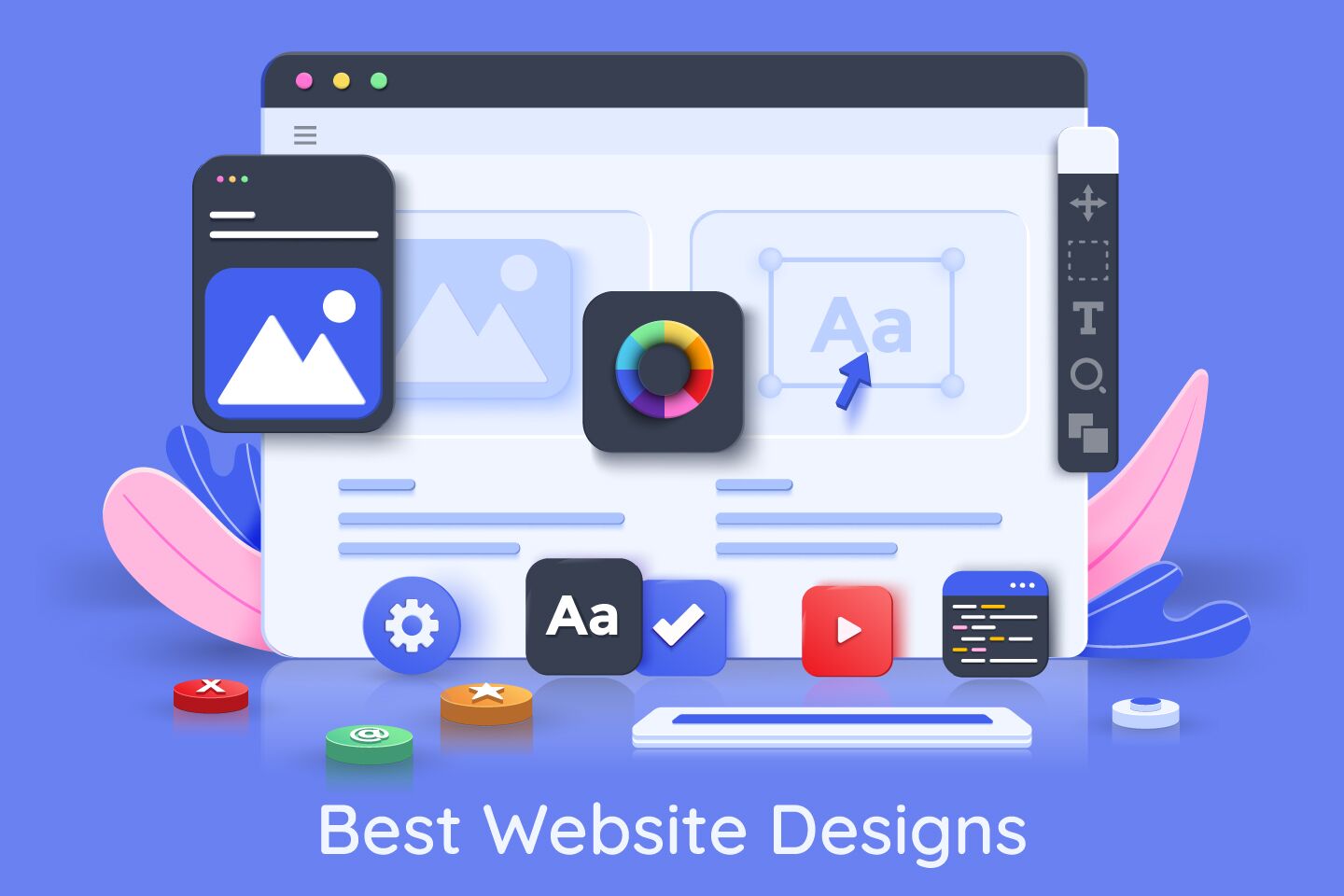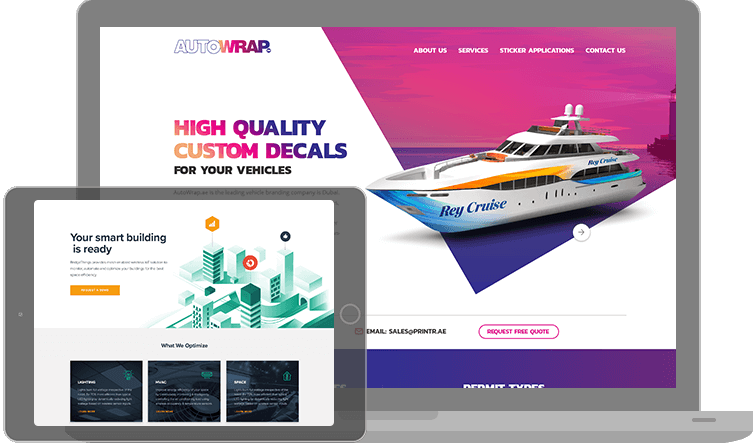
Crafting a User-Friendly Experience: Vital Elements of Efficient Internet Site Design
Necessary aspects such as a clear navigating framework, receptive layout principles, and fast filling times serve as the structure for engaging users properly. Comprehending the underlying variables that add to effective style can shed light on exactly how to enhance customer fulfillment and engagement.
Clear Navigating Structure
A clear navigating framework is fundamental to reliable site design, as it directly affects individual experience and engagement. Customers ought to be able to locate info easily, as intuitive navigation lowers stress and encourages expedition. An efficient layout enables site visitors to recognize the relationship between various web pages and content, causing longer website visits and raised communication.
To attain clearness, designers ought to employ acquainted patterns, such as leading or side navigation bars, dropdown menus, and breadcrumb tracks. These components not just improve usability yet additionally give a sense of positioning within the website. Additionally, keeping a consistent navigation framework throughout all web pages is important; this familiarity assists users prepare for where to locate preferred info.
It is additionally vital to restrict the variety of menu products to avoid overwhelming users. Prioritizing one of the most important areas and utilizing clear labeling will guide visitors efficiently. Furthermore, integrating search capability can additionally help customers in situating specific material promptly (website design). In summary, a clear navigating structure is not merely a design choice; it is a tactical aspect that significantly influences the general success of a website by fostering a enjoyable and efficient customer experience.
Responsive Style Principles
Effective web site navigating sets the stage for a seamless user experience, which becomes much more essential in the context of responsive design principles. Receptive layout guarantees that web sites adjust fluidly to various display sizes and alignments, enhancing ease of access throughout devices. This adaptability is attained through versatile grid formats, scalable photos, and media queries that enable CSS to change designs based on the tool's characteristics.
Trick principles of responsive layout include fluid layouts that use percents instead than dealt with devices, making sure that elements resize proportionately. In addition, utilizing breakpoints in CSS allows the style to transition efficiently in between various device sizes, enhancing the design for each and every display kind. Using receptive photos is additionally important; pictures ought to automatically get used to fit the screen without shedding top quality or triggering design shifts.
Moreover, touch-friendly user interfaces are crucial for mobile customers, with properly sized switches and instinctive motions improving user communication. By incorporating these principles, designers can develop web sites that not just look visually pleasing but additionally supply practical and engaging experiences across all tools. Eventually, efficient responsive layout promotes user satisfaction, reduces bounce prices, and motivates longer engagement with the web content.
Quick Loading Times
While users significantly expect websites to pack rapidly, quickly filling times are not simply a matter of comfort; they are necessary for keeping visitors and improving total user experience. Research study shows that users typically desert sites that take longer than 3 seconds to tons. This desertion can result in increased bounce rates and lowered conversions, eventually damaging a brand's online reputation and income.
Rapid packing times boost user interaction and satisfaction, as site visitors are more probable to discover a site that responds quickly to their communications. Additionally, internet search engine like Google focus on speed in their ranking algorithms, indicating that a slow site might battle to achieve exposure in search outcomes.

Instinctive User User Interface
Rapid filling times prepared for an appealing online experience, however they are only part of the formula. An instinctive interface (UI) is necessary to make sure visitors can navigate an internet site easily. A properly designed UI allows customers to accomplish their purposes with marginal cognitive tons, fostering a seamless communication with the site.
Key components of an instinctive UI include consistent format, clear navigating, and recognizable symbols. Consistency in design components-- such as color design, typography, and switch styles-- helps customers comprehend how to connect with the web site. Clear navigation frameworks, including sensible menus and breadcrumb routes, allow customers to discover details swiftly, decreasing disappointment and enhancing retention.
Furthermore, feedback systems, such as hover results and packing indicators, inform customers concerning their actions and the internet site's action. This openness cultivates trust fund and encourages ongoing involvement. Focusing on mobile responsiveness ensures that individuals enjoy a cohesive experience across tools, providing to the diverse ways audiences accessibility web content.
Easily Accessible Web Content Guidelines

First, use uncomplicated and clear language, staying clear of jargon that might perplex viewers. Emphasize correct heading structures, which not only help in navigation however likewise help display viewers in translating content hierarchies effectively. In addition, supply alternate text for photos to communicate their significance to users that count on assistive technologies.
Comparison is one more vital element; ensure that message stands apart versus the background to improve readability. Make sure that video clip and audio web content includes records and captions, making multimedia easily accessible to those with hearing impairments.
Last but not least, incorporate key-board navigability into your style, allowing individuals that can not use a computer mouse to access all site attributes (website design). By adhering to these easily accessible content guidelines, internet developers can create comprehensive experiences that satisfy the needs of all individuals, inevitably improving customer involvement and complete satisfaction
Conclusion
Finally, the integration of necessary aspects such as a clear navigation framework, responsive design principles, quick packing times, an intuitive interface, and obtainable web content standards is vital for creating an user-friendly site experience. These elements collectively improve functionality and interaction, guaranteeing that individuals can effortlessly communicate and navigate with the website. Focusing on these layout components not just enhances overall complete satisfaction directory but also fosters inclusivity, accommodating varied customer requirements and preferences in the digital landscape.
A clear navigating framework is essential to effective website layout, as it straight influences user experience and engagement. In recap, a clear navigating structure is not merely a layout option; it is a calculated element that significantly impacts the overall success of a website by cultivating a enjoyable and reliable individual experience.
Moreover, touch-friendly interfaces are vital for mobile individuals, with appropriately sized switches and intuitive motions improving user communication.While users significantly expect websites to fill rapidly, quickly packing times are not just an issue of convenience; they are crucial for maintaining visitors and boosting overall customer go to my blog experience. website design.In conclusion, the assimilation of important components such as a clear navigation framework, receptive design concepts, fast packing times, an instinctive individual interface, and obtainable material standards is vital for producing a straightforward site experience